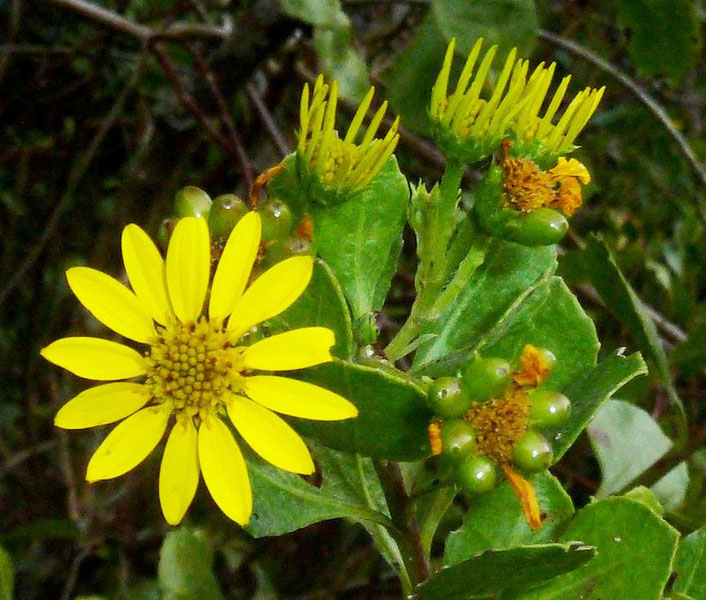Osteospermum moniliferum

Description
This is a daisy perennial, woody, upright shrub, growing to 3 m. Fruit are berry-like dark brown or black.In mismanaged Cape Flats Sand Fynbos, this species along with Carpobrotus edulis replaces the diversity of species.
"According to Smith in his Common Names of South African Plants (1966) bietou fruit was formerly used by the Khoi and San as a food source. Other uses an infusion of the leaves as an enema to treat fevers (Coates Palgrave)."
"The bietou is easily grown and makes an attractive garden asset and especially useful pioneer shrub for the new garden. It makes a striking combination grown with white blombos (Metalasia muricata) and krantz aloe (Aloe arborescens). Ample compost annually during winter or spring will enhance growth and performance. Bietou is relatively pest free and an asset to any garden."
Also known as Chrysanthemoides monilifera and Osteospermum subcanescens
Propagation instructions - cuttings
"The bietou is easily grown and makes an attractive garden asset and especially useful pioneer shrub for the new garden. It thrives well in strandveld, fynbos, seafront and grassland gardens. It is a rapid grower, requires a sunny, well-drained position and sufficient space. "
Propagation instructions - seeds
"Seed germinates with some difficulty and needs scarification (mechanical or chemical). Plant seed in sandy, well drained soil and sow in spring. The seedlings are fast growing and should be transplanted to small containers when large enough to handle."
Sources and references
Scientific name
Osteospermum moniliferum
Common name(s)
Tickberry
Features
- Attracts butterflies
- Can be used as a hedge
- Drought-resistant
- Easy to grow
- Edible
- Good for coastal areas
- It provides medicinal value
- Pioneer species
- This will attract honey bees
- Will attract monkey beetles
